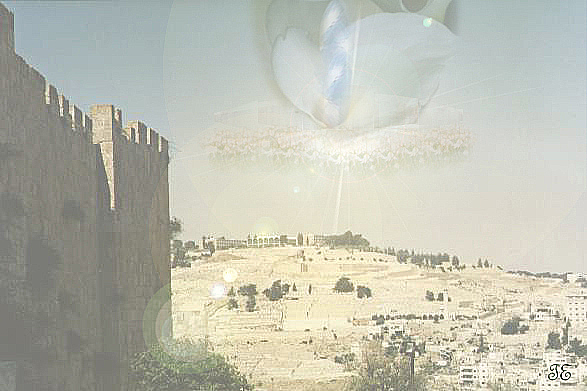in what ways was the parade of the apprentice boys of derry an expression of protestant history and culture? the apprentice boys of derry
In what ways was the parade of the Apprentice Boys of Derry an
expression of Protestant history and culture?
The Apprentice Boys of Derry have long been part of the Unionist
cultural heritage in Northern Ireland. Indeed, the Siege of Derry
which the Apprentice Boys commemorate is of huge significance to
Protestants living in the city.
The Siege of Derry took place between December 1688 and July 1689. At
105 days, it stands as the longest siege in British History. It
occurred due to the War of the Three Kings which was taking place
between the Catholic James II and his Protestant son-in-law William of
Orange. James’ forces surrounded the plantation town of Derry where
Protestant refugees from all over Ulster had taken refuge. The
governor, Colonel Robert Lundy, wished to surrender but was defied by
thirteen apprentice boys who locked the gates of the city against the
enemy and declared their battle cry of “No Surrender!”
Lundy fled the city and was replaced by George Walker. In July the
King William sent three ships up the Foyle to relieve the city. The
lead ship The Mountjoy broke through the boom that had been laid, thus
ending the siege, freeing the besieged Protestants and immortalising
the characters involved as cultural and historical icons for the
Unionist population.
The story of the siege became an important part of Unionist folklore.
It represented the historic struggle that they had to endure as a
minority in the island of Ireland. The Apprentice Boys organisation
was formed in Dublin in 1813. The men who created it sought a common
identity and increased security through an allegiance with those from
their own cultural background. Soon afterwards a club was formed in
Derry and by 1856 the General Committee of the Apprentice Boys had
taken charge of the commemoration of the important dates in the siege.
The Apprentice Boys are organised into eight parent clubs. December 18th
commemorates the closing of the gates by the Apprentice Boys, and it
is at this parade that the traitor Lundy is burned in effigy. The main
parade on August 12th commemorates the relief of the city, and is
followed by a religious service at St. Columb’s Cathederal, the laying
of a wreath at the war memorial and the initiation of new members.
These parades have become as much a part of the culture and history of
Unionists in Ulster (especially Derry) as the siege itself.
In the period after the partition of Ireland, the Unionist population
of Derry felt isolated and the proximity to the Free State made them
feel the need to assert their unity. Their parades were a display of
strength among a minority who were still preoccupied by a siege
mentality. The cries of “No Surrender” from the Apprentice Boys of
1688 inspired the twentieth century unionists to stand firm against
the threat of nationalism. The awareness of being under siege just as
the loyalists of 1688 were provided a unity and fellowship, a common
cultural bond and a shared history behind which Unionists could unite.
Membership of the organisation is limited to those of the “reformed
Protestant faith”. To nationalists in the city the parades were
triumphalist parades and reinforced Protestant Unionist dominance over
their Catholic nationalist neighbours. It was this sectarian aspect to
the parades that saw the Bogside residents react angrily to the
patronising jaunts and coin-throwing of members of the Apprentice Boys
during the parades, and was to lead ultimately to the Battle of the
Bogside and the introduction of British troops to the province in
1969. Hence, the culture and history that the parades expressed was to
have a negative impact on the history of Northern Ireland during the
Troubles. However, with the peace process and improved relations
between the two communities, the annual Maiden City Festival now
allows all residents of Derry to celebrate their culture and history
in peace and friendship.
 PAGE 16 OF 16 CLAIMANT CUSTOMER FOCUS GROUPS AND
PAGE 16 OF 16 CLAIMANT CUSTOMER FOCUS GROUPS AND 12TH ANNUAL CAROLINA CHILDREN’S CHARITY 5K RUNFAMILY FUN WALK
12TH ANNUAL CAROLINA CHILDREN’S CHARITY 5K RUNFAMILY FUN WALK ЗВІТ ПРО ВИКОНАННЯ ПЛАНУ РОБОТИ МУКАЧІВСЬКОЇ ОДПІ ГУ ДФС
ЗВІТ ПРО ВИКОНАННЯ ПЛАНУ РОБОТИ МУКАЧІВСЬКОЇ ОДПІ ГУ ДФС EL GORRIÓN SOLITARIO DESDE LA CIMA DE LA ANTIGUA
EL GORRIÓN SOLITARIO DESDE LA CIMA DE LA ANTIGUA INFORMATIE FRAUDE EN PLAGIAAT TEN BEHOEVE VAN STUDENTEN FGW
INFORMATIE FRAUDE EN PLAGIAAT TEN BEHOEVE VAN STUDENTEN FGW Planta Remanufactura Coronel Fecha y Hora de Inicio
Planta Remanufactura Coronel Fecha y Hora de Inicio GCSE CHEMISTRY HOW TO ANSWER 6 MARK LOR
GCSE CHEMISTRY HOW TO ANSWER 6 MARK LOR RETRAITE DE LA RÉSURRECTION 15 AVRIL 14 MAI DESCRIPTION
RETRAITE DE LA RÉSURRECTION 15 AVRIL 14 MAI DESCRIPTION MINISTERIO DE LA PRESIDENCIA CENTRO DE INVESTIGACIONES SOCIOLÓGICAS
MINISTERIO DE LA PRESIDENCIA CENTRO DE INVESTIGACIONES SOCIOLÓGICAS